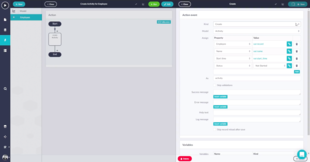
No-code development platforms (NCDPs) allow creating application software through graphical user interfaces and configuration instead of traditional computer programming based on writing code.
No-code development platforms are closely related to low-code development platforms as both are designed to expedite the application development process.[1] However, unlike low-code, no-code development platforms require no code writing at all, generally offering prebuilt templates that businesses can build apps with.[2] In the 2010s, these platforms have both increased in popularity as companies deal with a limited supply of competent software developers.[3]
No-code development platforms are closely related to visual programming languages.[4]